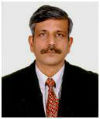Improving Data Center Competitiveness – Successful Solutions

The Green Grid (TGG) ( www.thegreengrid.org ) is a nonprofit consortium of industries with more than 175 member companies around the world. TGG is fast becoming a global authority on data centers and recently published a case study of energy efficiency in data centers in Japan. The findings are summarized here.
In one case, a company decided reduce total data center energy consumption by 50% over five years by following a three-pronged approach:
- Visualization – collection of multidimensional data about the data center itself: temperature, humidity, energy utilization, abnormalities and excessive variations.
- Analysis – analysis of root-cause inefficiencies uncovered an airflow shortage under the floor that was creating local hot spots, leading to imbalances between hot and cold air.
- Optimization – the under-floor cable layout was improved and other changes were made to improve the air flow.
The result of the optimization was that rack temperature was reduced by 2 degrees. Two air conditioners were found to be surplus and removed. Further improvements have been made by replacing old air conditioners with more efficient ones.
Another company found that awareness of power consumption was itself a catalyst for continuous improvement. The company examined in detail the energy efficiency in each data center, interviewing operations staff and management to build standard data collection methods.
Results of the initial study showed temporary increases in use of captive power during power outages, and increase in air conditioning load during installation of new equipment. Having seen the savings accrue from simple consumption awareness, the company is now expanding its reporting, automating reporting functions, and increasing frequency of reports to aid immediate corrective action.
Another company built a data center in Kyushu in 2008, adopting a hot aisle containment design. The efficiency of this design improves with the power density level. As the data center gets more load, the efficacy of hot air isolation improves. The floor was raised to one meters in height – rare for Japanese companies. Cabling under the floor was routed so as not to impede air flow. The speed of intake fans was adjusted based on the temperature inside, further reducing power consumption. Hot air thrown out by the exhaust system is then used to heat up a large green house that grows numerous exotic fruits!
This company now uses external air for 10% of its data center cooling needs, thus reducing total consumption by 40%. It has generally been found that energy efficiency is higher in containerized data centers as they are erected faster and have lower operating costs. Japan did not use containerized data centers earlier because of building standard laws and fire laws, but these have since changed.
Experience shows that data center efficiency (read: significant cost reduction) is best ensured by a synchronized approach incorporating both IT and facility equipment. Seasonal variations must also be taken into account and companies now routinely prepare different operating modes accordingly.
Be Part of Our Cloud Conversation
Our articles are written to provide you with tools and information to meet your IT and cloud solution needs. Join us on Facebook and Twitter.
About the Guest Author:
 Sanjay Srivastava has been active in computing infrastructure and has participated in major projects on cloud computing, networking, VoIP and in creation of applications running over distributed databases. Due to a military background, his focus has always been on stability and availability of infrastructure. Sanjay was the Director of Information Technology in a major enterprise and managed the transition from legacy software to fully networked operations using private cloud infrastructure. He now writes extensively on cloud computing and networking and is about to move to his farm in Central India where he plans to use cloud computing and modern technology to improve the lives of rural folk in India.
Sanjay Srivastava has been active in computing infrastructure and has participated in major projects on cloud computing, networking, VoIP and in creation of applications running over distributed databases. Due to a military background, his focus has always been on stability and availability of infrastructure. Sanjay was the Director of Information Technology in a major enterprise and managed the transition from legacy software to fully networked operations using private cloud infrastructure. He now writes extensively on cloud computing and networking and is about to move to his farm in Central India where he plans to use cloud computing and modern technology to improve the lives of rural folk in India.


